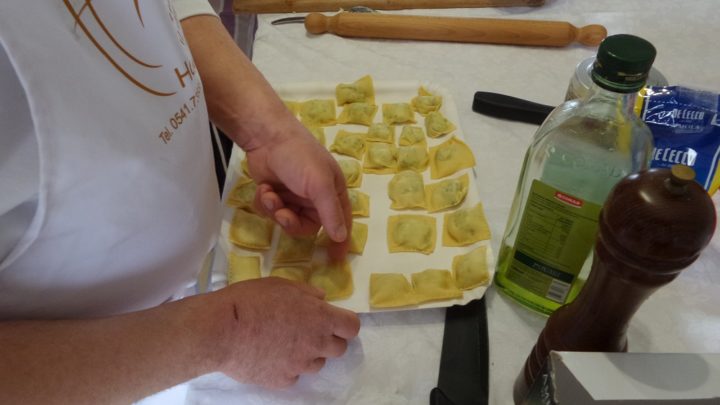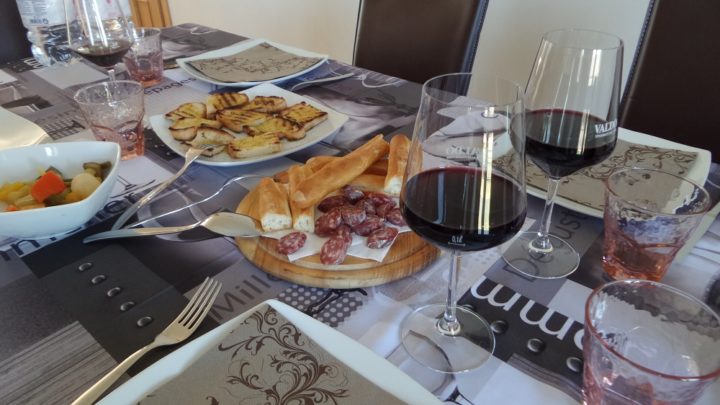
Queensland couple Neil McLean and Gai Reid journeyed to Europe to enjoy some authentic travel, ‘living like locals’. The result? They spent 300 days pet and house-sitting their way across four countries, spending less than it would cost them to live at home. Plus they started a new business, Village to Villa! Here’s the next chapter in the fabulous account of their escapades…
[To read episode 35, click here]
One of the many joys of living like a local in Italy is learning about the traditional styles of food. As Australians, Italian food is very familiar to us. In the great migration intake during the 1950s, a whole generation of Italian families (and Greeks and Eastern Europeans) settled in the big land Down Under. They brought their language, culture, culinary and wine making skills with them, among other things!
Many of us in our early to mid-60s grew up appreciating Italian food. The opportunity to be in the mother country and have access to local ingredients was a lovely experience.
Our hosts had introduced us to Daniela Bucchi, a local foodie and operator of eco-tourism business Your Holidays In Umbria, which takes small guided tours of the area. Her husband Savario is a chef and all-round good person to have around! They kindly invited us to a pasta making class at their home outside Umbertide. We were going to learn how Nonna handled it.
There is not much point laying out the recipe and the insider techniques they used however, we did shoot it for a story. The pasta base is made from flour and egg and later put through a roller to flatten it out. I don’t know why, but I had always assumed the different types you buy – tagliatelle, spaghetti, fettucine etc. – were made from different material. The pasta base is all the same and Daniela and Savario say the only difference is in shape and it has an individual characteristic of mixing with the additives.
On the day of our visit we were making ravioli with a mushroom centre. The wild mushrooms were picked several months ago while they were in season and frozen to preserve them. Making the little pillows was fun, as was filling them with the mushroom mixture Savario had prepared.

The previous day Daniela had introduced us to a local truffle hunter by the name of Alessio. When the pasta making was done, we visited Alessio’s family home where he had an orchard filled with trees specifically grown for their likelihood of ‘hosting’ truffles.
Alessio also had an extensive dog facility, holding about 20 barking canines, all primed and ready to show what they can do. Hunters had once used pigs to find the truffles, but the trend turned to dogs because they are easier to train and control. On the day of our visit, Alessio’s best dog Maggie was the lead sniffer.
The black truffles — or Périgord truffles as they are officially known — are more common than the highly-prized and valuable ‘white truffles’ that are harder to find. Oak and hazelnut trees are the main targets. The four main countries producing the tasty fungi are France, Italy, Spain and Australia.
We were taken to a private estate way deep in the forest … No doubt a ‘secret spot’ for Alessio. It was just a few minutes before Maggie was on the trail and going at it madly. The dog’s job is to root out where a truffle will be growing below the base of the tree. We learned it is usually on the downside of the hill where there is more moisture. The hunter carries a vanghino, the tool for digging out the truffle.
While Maggie sniffs frantically and digs at the spot, Alessio uses the bladed instrument with a hook on the end to extricate the valuable morsel. We are lucky. He digs out quite a large piece (a bit smaller than a tennis ball) and hands it to Daniela. It was a very generous gesture considering white truffles can go for several thousand dollars a kilo.

When we returned to Daniela’s home to continue our pasta making, all was ready for lunch. Pairing the meal with a delightful homemade red, we sat for the feast as Savario shaved a white truffle over the four plates of homemade mushroom ravioli. This is living!
Along with the main meal, there was an assortment of breads and cheese. Despite Daniela having reasonable English and Savario a spattering (with us virtually zero Italian) it was a noisy, convivial and hugely delightful afternoon.

It was the kind of travel experience you simply cannot get when you are staying in the regulation type tourist accommodation and the prime reason we decided to go for what we’d consider an authentic travel experience. We have since become friends with Daniela and Savario and communicate regularly. It’s fun to have friends in other countries. We hope we left them with many happy memories too.
Living like locals is a wonderful way to discover these types of gem moments that will be with us forever. Our time in central Italy has opened the door for more travel there and ever more local moments.